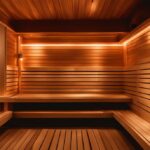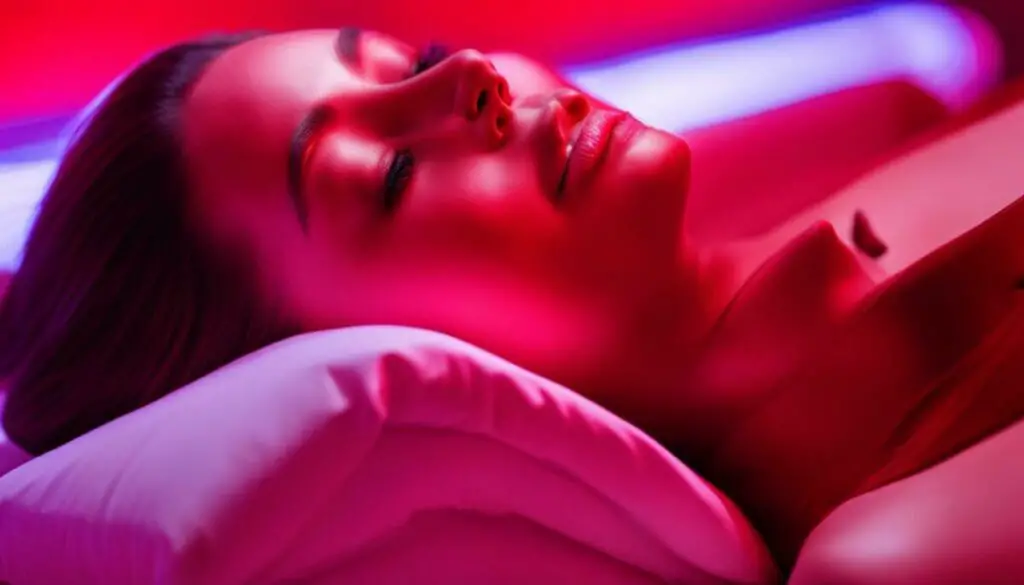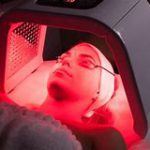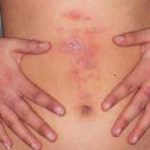Last Updated on 1 year by Francis
Blue light therapy is becoming an increasingly popular solution for treating a variety of skin conditions, from acne to psoriasis and more. But how long does it take for blue light therapy to heal? In this article, we’ll explore the science behind blue light therapy, the different types of treatments available, and how long it typically takes for the therapy to be effective. We’ll also discuss the potential risks associated with blue light therapy, as well as the possible benefits, so you can make an informed decision about whether it’s the right treatment for you.

Contents
How Long Does Blue Light Therapy Take to Heal?
Blue light therapy is a type of phototherapy used to treat a range of skin conditions, including acne, psoriasis, and eczema. It uses light in the blue spectrum to target the bacteria that cause skin issues, as well as reduce inflammation. While the exact time frame for healing varies from person to person, blue light therapy typically takes several weeks to show results.
The time frame for blue light therapy depends on a few factors, such as the severity of the skin condition and the type of light used. Generally, the treatment can take anywhere from a few weeks to a few months to see full results. The process also involves multiple treatments, typically two to four sessions. During each session, the patient will be exposed to the blue light for about 15 to 20 minutes.
Patients should also be aware that blue light therapy can cause minor side effects, including redness and mild discomfort. However, these side effects typically subside shortly after the session is complete.
What Are the Different Types of Blue Light Therapy?
Blue light therapy can be done in two ways: with an in-home device or with a professional treatment.
In-home devices use LED bulbs to emit blue light. These devices are typically handheld and allow patients to get the blue light treatment in the comfort of their own home. However, it is important to note that the intensity of the light from these devices is typically lower than that of the professional treatments.
Professional treatments involve a special type of blue light that is stronger and more effective than the light from at-home devices. These treatments are typically done in a doctor’s office and are supervised by a medical professional.
What Are the Benefits of Blue Light Therapy?
Blue light therapy has many benefits, including:
-Reducing inflammation in the skin
-Killing bacteria that cause skin conditions
-Improving the appearance of acne scars
-Stimulating the production of collagen and elastin
-Improving the overall texture and tone of the skin
What Should I Expect After a Blue Light Therapy Session?
Immediately after a blue light therapy session, patients may experience some redness and mild discomfort. However, these side effects should subside shortly after the session is complete.
In the days and weeks following the session, patients may notice an overall improvement in their skin. This may include a reduction in inflammation and acne, as well as an improvement in the overall texture and tone of the skin.
Are There Any Risks Associated With Blue Light Therapy?
Blue light therapy is generally considered safe and effective for treating skin conditions. However, it is important to note that blue light therapy can cause sunburn-like symptoms, including redness and mild discomfort. Patients should also be aware that blue light therapy can cause the skin to become more sensitive to sunlight, so it is important to use a sunscreen when outdoors.
Related Faq
Question 1: What is blue light therapy?
Answer: Blue light therapy is a type of phototherapy used to treat a variety of conditions, including acne, psoriasis, vitiligo, seasonal affective disorder (SAD), wrinkles, and other skin conditions. It involves exposing the skin to light that contains blue light in the ultraviolet (UV) range of the light spectrum. This type of light is thought to destroy the bacteria that cause acne, reduce inflammation, and stimulate the production of collagen, which helps to make skin appear more youthful.
Question 2: How does blue light therapy work?
Answer: Blue light therapy works by targeting the specific bacteria that cause acne. It does this by producing a type of energy called photochemical energy, which destroys the bacteria. The light also helps to reduce inflammation that can cause redness, swelling, and pain. Additionally, it stimulates the production of collagen, which helps to make skin appear more youthful.
Question 3: Who can benefit from blue light therapy?
Answer: Blue light therapy can be beneficial to those suffering from acne, psoriasis, vitiligo, seasonal affective disorder (SAD), wrinkles, and other skin conditions. It can also be used to treat other conditions, such as sleep disorders, pain, and depression.
Question 4: How long does blue light therapy take to heal?
Answer: The length of time required for blue light therapy to be effective depends on the individual and the condition being treated. Generally, it takes several sessions of blue light therapy to see results, and the number of sessions needed can vary from person to person. In general, most people will see some improvement after 3-5 treatments.
Question 5: Is blue light therapy safe?
Answer: Blue light therapy is generally safe when it is used correctly. It is important to use the recommended light intensity and duration, as well as to avoid exposing the skin to too much UV light, which can damage the skin. Additionally, it is important to wear protective eyewear during the treatment.
Question 6: Are there any side effects of blue light therapy?
Answer: Possible side effects of blue light therapy include skin irritation, dryness, and itching. Additionally, some people may experience temporary redness, swelling, and pain after the treatment. It is important to use the recommended light intensity and duration to minimize the risk of side effects. Additionally, it is important to follow your doctor’s instructions for any post-treatment care.
How Blue Light Therapy Works To Treat Acne
Blue light therapy is an effective and safe method for treating certain skin conditions. While it can take some time for the therapy to produce results, most people experience positive outcomes within a few weeks. With patience and dedication, blue light therapy can help you achieve the skin of your dreams.








